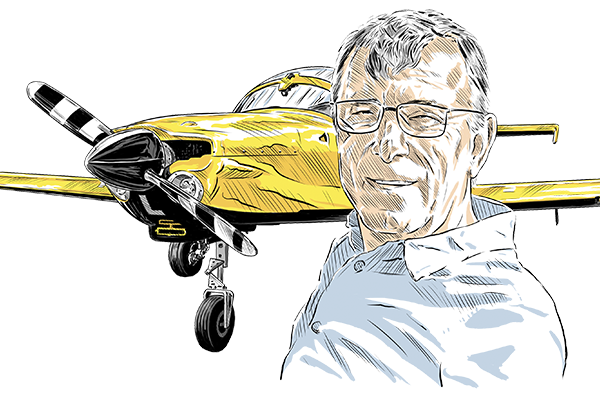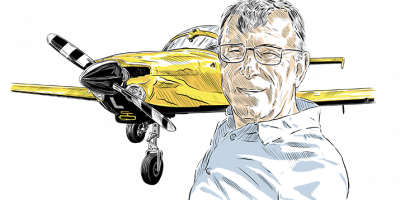We are always under pressure for some reason or other. Deadlines that have to be met, difficult decisions to take or quite simply a need to fly in order to get paid. We mostly manage to juggle these routine issues alongside the other great stressors in life of births, deaths and relationships.
But occasionally we can’t cope, the stress and fatigue gets to us and we start making mistakes. It may simply be that we fall asleep on the job, but more often it leads to us making poor decisions. This issue’s Analysis looks at why getting airborne in the first place was probably the worst decision of them all.
Accident 1
On 2 July 2020, at about 1230 Eastern Standard Time (EST), the pilot of a Cessna 208B Caravan, registered VH-DQP, departed Cairns on a ferry flight to Redcliffe.
The pilot initially maintained 10,000ft, however, when they encountered the un-forecast icing conditions and cloud, the pilot climbed to flight level 110. Some four hours into the flight, the pilot made first contact with Burnett sector ATC.
Twenty minutes later, ATC attempted to contact him regarding the descent into Redcliffe. No response was received from the pilot. ATC, with the assistance of pilots from nearby aircraft, continued attempts to contact the pilot of DQP.
The aircraft was observed by ATC to overfly Redcliffe and continue tracking towards Brisbane. During this time, ATC declared an uncertainty phase and contacted the Australian Maritime Safety Authority Joint Rescue Coordination Centre and the Australian Defence Force for support.
Shortly after, ATC asked the pilot of a Royal Flying Doctor Service Beechcraft B200 aircraft, which was departing Brisbane, to intercept DQP. The B200 pilot intercepted the aircraft, but was unable to establish comms with the pilot of DQP. The B200 pilot then attempted to attract the pilot’s attention by dipping the aircraft’s wings and approached DQP in an effort to activate its traffic alert and collision avoidance system. The pilot did not respond to these attempts. At about 1735, after 40 minutes without contact and about 60nm south-south-east of Redcliffe, comms with the DQP pilot was re-established.
ATC instructed the pilot to conduct an immediate descent to 8,000ft and to change to a discrete ATC frequency. After a minute of no change in the aircraft’s altitude, ATC again instructed the pilot to change frequencies and to use oxygen as they were treating the situation as a hypoxic event. This was also reiterated to DQP pilot by the B200 pilot. Air traffic control reported that the pilot sounded ‘groggy’ and ‘not really with it’ upon first contact and took a few minutes before slowly commencing the descent to 8,000 ft.
Upon changing frequencies, ATC instructed the pilot to land at Gold Coast Airport. The pilot accepted the instruction at first, but then later advised that he would prefer to continue to Redcliffe instead. Air traffic control reiterated that, given the situation it would be better for the pilot to land at the Gold Coast as there was runway lighting and emergency services available.
The pilot accepted the instruction and tracked to the Gold Coast, while the B200 pilot continued to follow and monitor the aircraft. Air traffic control reported that the pilot continued to sound ‘groggy’, but gradually improved on approach to land. The aircraft was landed safely at 1801 and the pilot was attended by the Gold Coast aircraft rescue and firefighting officers and the aerodrome safety officer. The officers conducted a visual observation of the pilot. The pilot, who reported falling asleep, declined first aid and an ambulance.
Accident 2
The pilot of the Hogan Innovator aircraft, who was also the owner / designer / builder of the experimental amateur-built aeroplane, had no recent flight experience and a medical certificate that had expired about 20 years before the accident flight.
“The pilot was pressured by investors and missed deadlines, and ill with a severe cold”
Despite assurances to his employees that he would not fly the aeroplane on what was its second test flight, video from inside the accident aeroplane showed that the pilot departed on the accident flight and the aeroplane immediately displayed rapid divergences in both the pitch and roll axis that were demonstrated on the aeroplane’s first test flight.
The aeroplane remained at treetop height throughout the upwind leg and into the crosswind turn and reached about 200ft agl in level flight on the downwind leg. As the aeroplane accelerated, rapid pitch oscillations (phugoid) were exhibited. A handheld radio secured to the co-pilot’s seat shoulder harness, as well as the pilot himself, were seen to ‘float’ in the cockpit each time the aeroplane pitched nose down as the amplitude of the phugoid progressively increased, the duration of weightlessness displayed each time also increased. During one phugoid, an audible ‘oil pressure’ warning was heard.
The video ended abruptly as the pilot became unseated for about the fourth time and as the aeroplane appeared near treetop height. The aeroplane then impacted terrain. The pilot had no experience in the accident aeroplane, which was the prototype for an aeroplane he intended to mass produce.
A test pilot had completed the aeroplane’s first flight and described significant stability issues. After the test pilot was able to safely land the aeroplane, it was disassembled, returned to the factory, modified according to the accident pilot’s specifications based on captured data and the test pilot’s observations.
According to employees of the company, the pilot was pressured by investors and missed deadlines, and was sleep-deprived and ill from a ‘severe’ cold for which he was self-medicating. This pressure likely influenced the pilot’s decision to test the prototype aeroplane, despite his lack of experience and the stability issues demonstrated by the aeroplane on its initial test flight.
The condition of the wreckage precluded a thorough accounting of the flight control system. Although based on statements provided by the previous test pilot, it is likely that the stability portrayed in the video of the first test flight remained during the accident flight, and when combined with the pilot’s lack of experience, resulted in him being unable to maintain control of the aeroplane.
Accident 3
The airline transport pilot reported that, before landing in a Beech 200 Super King Air following an uneventful flight, he extended the wing flaps to the approach position and extended the landing gear. The gear indicator lights showed ‘three greens’. After touchdown, he heard noises, and the aeroplane started to sink. After the aeroplane came to a stop on the right side of the runway, he noticed that the landing gear handle was up. The pilot stated to the co-pilot, “How did the gear handle get up?” Then placed the handle to the down position and the flight crew exited the aeroplane.
“The pilot reported that he flew seven legs on the day and had only eaten a banana”
The co-pilot reported that he was acting as an observer during the flight and that he also saw three green landing gear down-and-locked indicator lights before landing.
The airframe sustained substantial damage from contact with the runway. All three landing gear were found in a partially-extended position. Skid marks from all three tyres were observed on the runway leading up to the main wreckage.
The skid marks and the partially extended gear were inconsistent with the pilot’s account that the gear handle was up after the aeroplane came to rest and was then lowered.
The gear handle consisted of an electrical switch that required it to be pulled out of a detent before placing it up or down. There was no mechanical linkage between the gear handle and the landing gear, as they were driven by an electric motor.
It is likely that the pilot realised that the gear were not extended just before touchdown and then tried to lower the gear, resulting in a touchdown with the gear only partially extended.
The pilot reported that he had experienced several interruptions to his sleep the night before the accident. He also reported that he flew seven legs on the day of the accident for a total of 5.2 hours, only eating a banana for breakfast during this time period.
It is likely that the pilot’s fatigue contributed to his failure to ensure that the landing gear were down and locked before landing.





